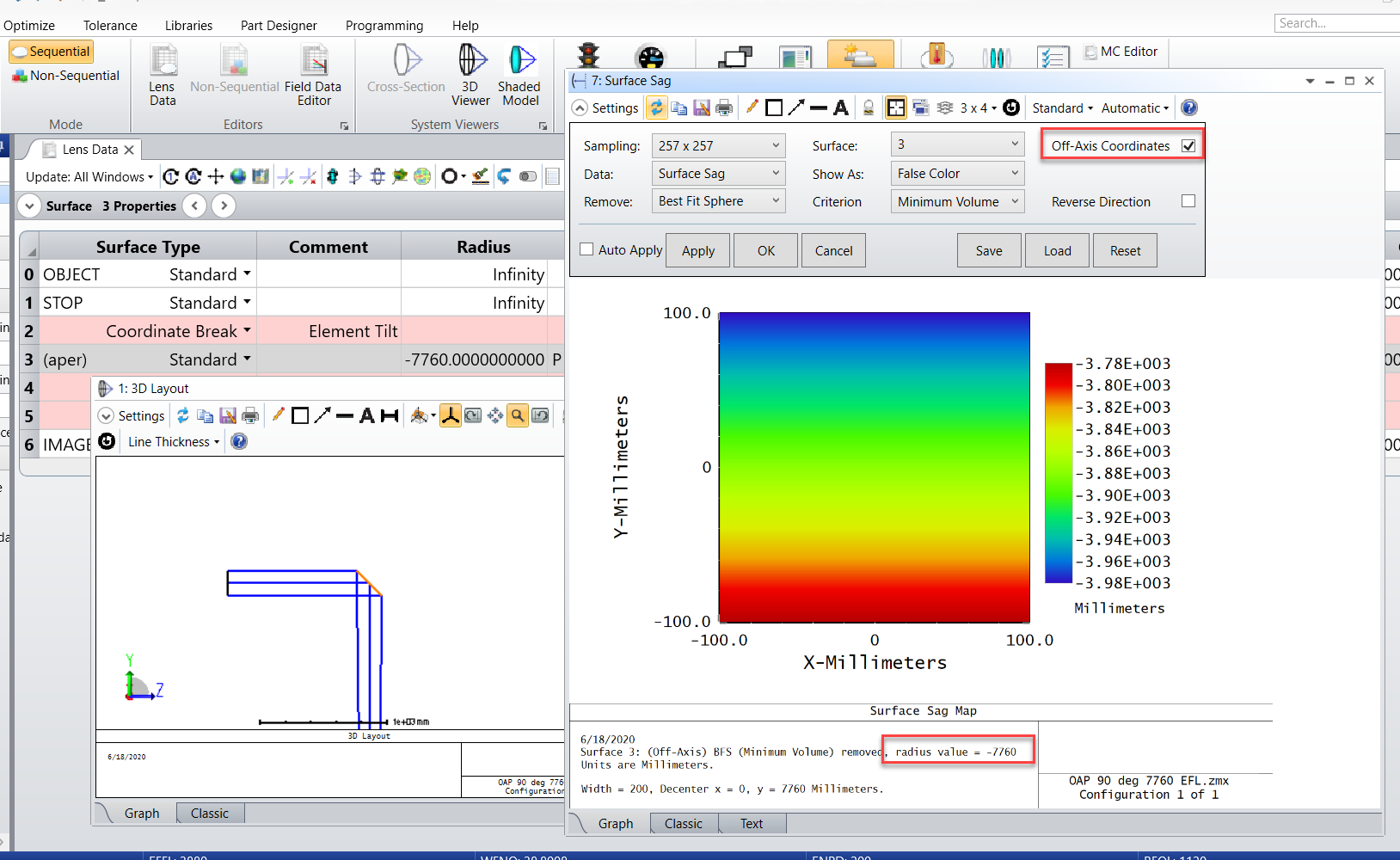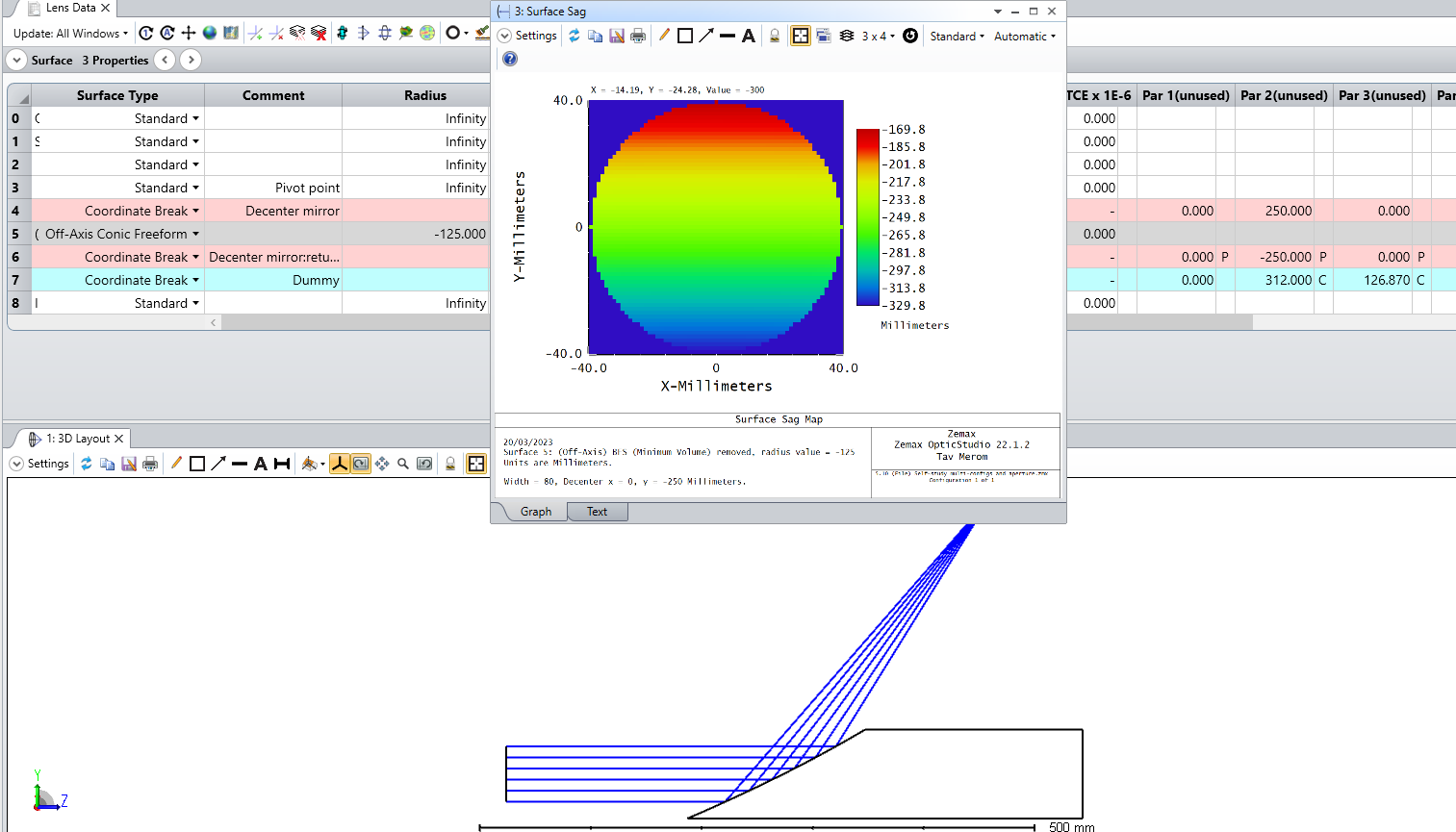Sag analysis for aff-axis aspherics was added recently (in 20.1, I think)- a feature I had asked for. I have been trying to use it to get the best fit sphere (with minimum material removal) for a large off-axis parabola which we will be polishing- very useful information when specifying a blank from the glass manufacturer . The analysis does not appear to give sensible results, reporting and ROC that is smaller than the base ROC of the parent parabola, with huge residual sags (100s mm). I suspect that this is because the sag calculations are done with respect to the plane tangential to the parent vertex rather than tangential to the local vertex (centre of the off-axis aperture).
I have, of course, been ticking the 'off-axis coordinates' box in the analysis settings window .
I have been trying to solve this via support@zemax.com but have just received an email saying that this forum is now the preferred method and quicker...
Lens and session file attached
Thanks for any help,
John







